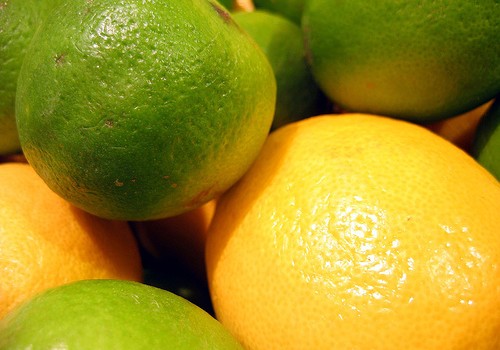
Citrus Fruit
Almost no common food helps your body absorb more iron from food than citrus fruit. There is only negligible iron in the citrus fruit itself. You have to be eating some other high-iron food at the same meal for the orange, grapefruit, lemon, lime, or exotic citrus to help. However, when you eat a combination of citrus and an iron-rich food, the acid in the citrus slows down the process of digestion in your stomach so that all the food you eat is more completely digested. More iron compounds are released from the food, and more are absorbed into your body.
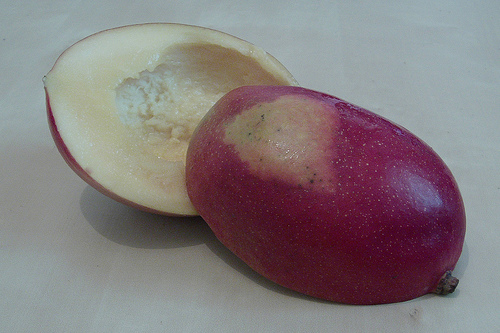
Mango and Honeybush
The mango is a delicious tropical fruit that is a suprising source of a kind of iron called mangoferin, chemically combined in one of the pigments that gives the mango its characteristic color. Mangoferin isn't just found in mangoes. It is also found in several other plants, including the honeybush, used to make an herbal tea that is especially popular in South Africa. The purpose of mangiferin in your diet is not to increase the amount of iron in your bloodstream. What mangiferin does is to chelate and buffer iron so that it does not form toxic free radicals of oxygen and can be used safely by your body, counteracting any iron toxicity, while providing a small amount of iron your body can use to make hemoglobin.
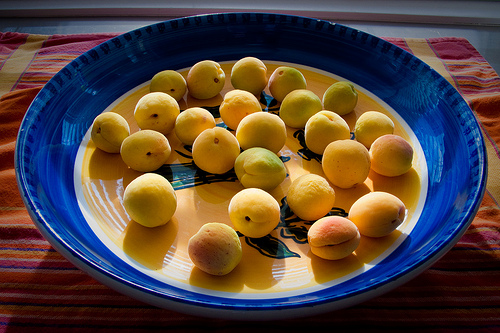
Apricots For Iron
Like people, apricot trees can suffer iron deficiency syndromes. When an apricot tree in planted on iron-deficient soil, or on alkaline soil that locks iron into forms that the tree cannot absorb, the leaves of the tree become chlorotic, or "anemic," and the tree does not bear fruit (or does not bear very much fruit). When the tree absorbs iron, it concentrates iron its fruit to fertilize the next generation. Ounce for ounce, apricots contain only about one tenth as much iron as iron-fortified cereal and one third as much iron as iron-rich meats such as liver, but they provide iron in a "slow release" from that provides the iron you need in a non-toxic form.
- Important notification about information and brand names used in this slideshow!
- Photo courtesy of Susan Batterman by Flickr : www.flickr.com/photos/sbatterman/3818782725/
- Bragança VL, Melnikov P, Zanoni LZ. Trace elements in fruit juices. Biol Trace Elem Res. 2012 May. 146(2):256-61. doi: 10.1007/s12011-011-9247-y. Epub 2011 Nov 9.
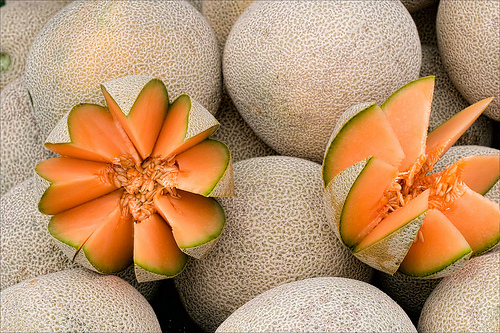
Orange-Fleshed Cantaloupes
The cantaloupe, a melon that is recognized by its netted rind and its orange flesh, is especially rich in iron, manganese, and zinc. The rind of the cantaloupe is even richer in these minerals that the edible flesh, but you should not put the rind in the juicer if there is any chance of the cantaloupe having picked up E. coli or other pathogenic bacteria from the soil on which it was raised. The riper the cantaloupe, the sweeter the cantaloupe, and the more highly concentrated its minerals. Eat cantaloupe by itself to get maximum absorption of its nutritional trace elements.
- Important notification about information and brand names used in this slideshow!
- Photo courtesy of Clay Irving by Flickr : www.flickr.com/photos/clayirving/2895432305/
- Lester GE. Antioxidant, sugar, mineral, and phytonutrient concentrations across edible fruit tissues of orange-fleshed honeydew melon (Cucumis melo L.). J Agric Food Chem. 2008 May 28. 56(10):3694-8. doi: 10.1021/jf8001735. Epub 2008 May 3.
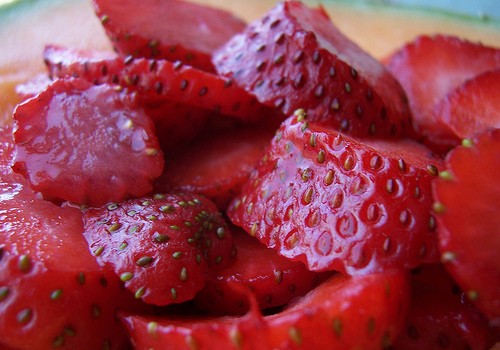
Strawberries For Extra Iron
Strawberries are great for getting a boost of added iron when they are stored in cast iron containers. If you make yogurt at home, for example, making strawberry yogurt in a cast iron pot will add about 50% more iron to the finished product. Just stir a couple of times a day for maximum absorption of the mineral. Organically grown strawberries are also a great source of both copper and zinc, but you should avoid buying conventionally raised strawberries if you can. The problem with strawberries grown in the USA is that they are treated with bromine compounds while still in the field, and the bromine compounds left in the berry can interfere with the body's absorption of iodine.
- Important notification about information and brand names used in this slideshow!
- Photo courtesy of Washthebowl by Flickr : www.flickr.com/photos/theopensite/3480066249/
- Quintaes KD, Almeyda Haj-Isa NM, Morgano MA. [Iron concentration and acceptation of yoghurt prepared in casting iron pots (iron migration and acceptation of yogurt)]. Arch Latinoam Nutr. 2005 Dec. 55(4):361-6. Portuguese.
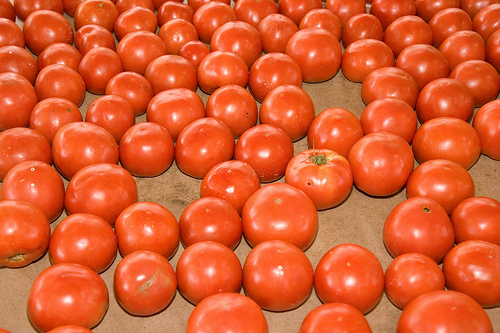
Tomatoes
Tomato connoisseurs tend to get fussy about their tomatoes. Heirloom tomatoes taste better than modern tomatoes. Vine-ripened tomatoes taste better than tomatoes that are picked green so they can be shipped long distances. And "hothouse" tomatoes are scorned by tomato gourmet. Greenhouse-grown hydroponic tomatoes, however, are actually better sources of iron and zinc than field-grown tomatoes, because their roots are constantly bathed in a solution of nutrients scientifically designed to provide the plant with all the trace elements it needs. In turn, the tomatoe provides those trace elements to you. The riper the fruit, the higher the mineral content. Cooking tomatoes and cooking with dried tomatoes provides even more iron.
- Important notification about information and brand names used in this slideshow!
- Photo courtesy of Wally Hartshorn by Flickr : www.flickr.com/photos/wallyhartshorn/2850274622/
- Luis G, Hernández C, Rubio C, González-Weller D, Gutiérrez Á, Revert C, Hardisson A. Trace elements and toxic metals in intensively produced tomatoes (lycopersicon esculentum). Nutr Hosp. 2012 Sep-Oct. 27(5):1605-9. doi: 10.3305/nh.2012.27.5.5944.
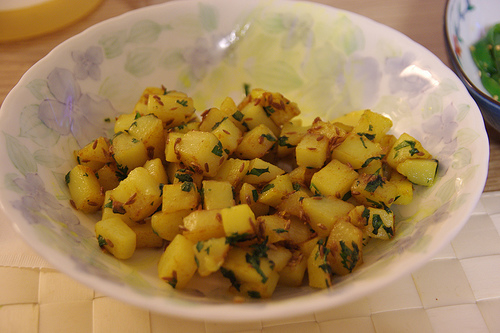
Potato
Three kinds of potatoes are particularly rich in minerals, Yukon Gold, Freedom, and especially Russett Burbank. For reasons not yet fully explained by science, potatoes grown in northerly locations (Idaho, Maine, Canada, Europe) are richer in minerals than others. A single serving of cool-climate Yukon Golds, Freedom potatoes, or Russett Burbanks can deliver about half of your daily RDA of iron, along with significant amounts of potassium, zinc, selenium, and copper. "Old" potatoes tend to have greater mineral content than "new" potatoes due to drying. Don't eat green potato peels. They are toxic. But if the peel isn't green, it is also a great source of minerals.
- Important notification about information and brand names used in this slideshow!
- Photo courtesy of pelican by Flickr : www.flickr.com/photos/pelican/3414606224/
- Nassar AM, Sabally K, Kubow S, Leclerc YN, Donnelly DJ. Some Canadian-grown potato cultivars contribute to a substantial content of essential dietary minerals. J Agric Food Chem. 2012 May 9. 60(18):4688-96. doi: 10.1021/jf204940t. Epub 2012 Apr 24.
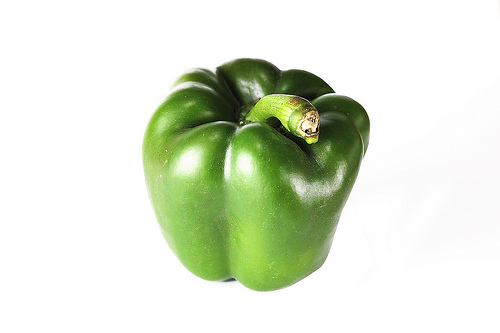
Green Peppers And Hot Peppers
Peppers of all kinds are essential to cooking in many parts of the world, just about anywhere that they will grow at least part of the year. Peppers contain a variety of a plant chemicals that counterbalance the potentially oxidative, free radical generating effects of iron. The capsaicin that makes hot peppers hot is an excellent antioxidant, as are the pigments in both hot and sweet peppers such as beta-carotene and their antioxidant vitamins C and E. If a pepper is hot enough to make you cry, it contains enough capsaicin to help your body absorb iron safely. You don't need to eat peppers with every meal, but include them in your diet on a regular basis if you can.
- Important notification about information and brand names used in this slideshow!
- Photo courtesy of Sharon Hunter by Flickr : www.flickr.com/photos/stuffedpeppers/5572058462/
- Rosa A, Deiana M, Casu V, Paccagnini S, Appendino G, Ballero M, Dessí MA. Antioxidant activity of capsinoids. J Agric Food Chem. 2002 Dec 4. 50(25):7396-401.
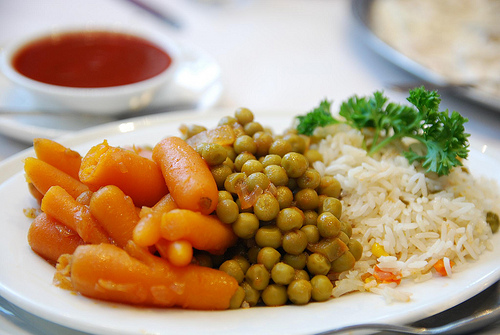
Cooked Vegetables
Cooking vegetables in a cast iron pot boosts their iron content. A study of cooking for children who suffer iron-deficiency anemia found that cooking snacks in a cast iron pot provided 16% more iron than cooking in a Teflon pot, and after 4 months, bloodstream iron levels in the previous iron-deficiency anemic children were 8% higher. Adding a little acid, lemon juice or vinegar, for instance, increases the iron content of food cooked in iron pots and pans even more. Stainless steel pots also contribute iron to the foods cooked in them; aluminum pots, ceramic pots, glass cookware, and Teflon coated cookware will not add iron to food.
- Important notification about information and brand names used in this slideshow!
- Photo courtesy of Alpha by Flickr : www.flickr.com/photos/avlxyz/5496831594/
- Kulkarni SA, Ekbote VH, Sonawane A, Jeyakumar A, Chiplonkar SA, Khadilkar AV. Beneficial Effect of Iron Pot Cooking on Iron Status. Indian J Pediatr. 2013 Jul 19. [Epub ahead of print].
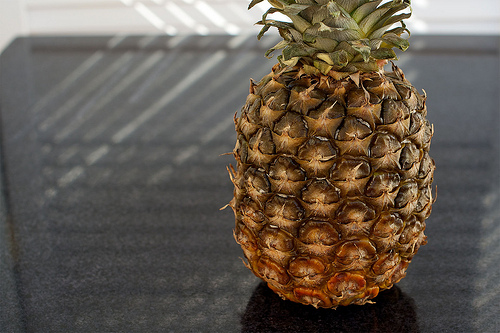
GMO Pineapple
Modern pineapples have been genetically modified to concentrate both iron and zinc from the soil in their fruit to provide a better dietary source of these micronutrients and also to "fertlize" the plants, which also need iron and zinc to grow. The new genetically modified (GMO) pineapples contain up to 5 times as much iron and 2-1/2 times as much zinc as non-GMO pineapples. Conventional, non-GMO pineapples contain only about 1/6 as much iron as apricots and 1/'60 as much iron as bread or cereal made with foritifed grains, but they help slow down digestion so that the iron in other foods is better absorbed.
- Important notification about information and brand names used in this slideshow!
- Photo courtesy of Kelvin Beecroft by Flickr : www.flickr.com/photos/kelvinbeecroft/5431722022/
- Mhatre M, Srinivas L, Ganapathi TR. Enhanced iron and zinc accumulation in genetically engineered pineapple plants using soybean ferritin gene. Biol Trace Elem Res. 2011 Dec.144(1-3):1219-28. doi: 10.1007/s12011-011-9092-z. Epub 2011 May 31.


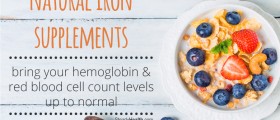




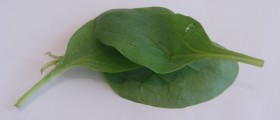



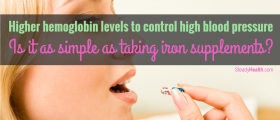


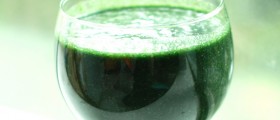

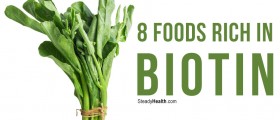
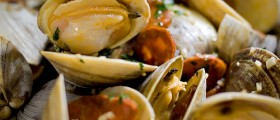
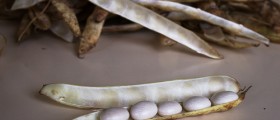
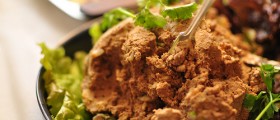





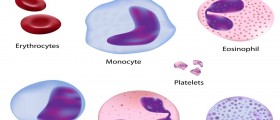
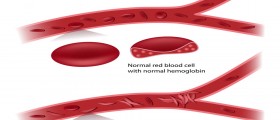
Your thoughts on this
Loading...